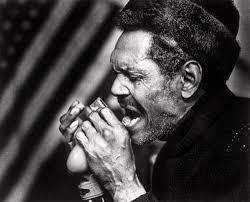Big Walter Horton, also known as “Shakey,” remains one of the most respected harmonica players in blues history. His expressive, deeply emotional playing and influence on future generations of harmonica players have secured his place in the pantheon of blues legends. But beyond his recordings and performances lies a fascinating life full of little-known stories and remarkable facts. Here are five curiosities about Big Walter Horton that might surprise even devoted blues fans.
1. He Claimed to Have Recorded Before Sonny Boy Williamson I
Big Walter Horton often stated that he made his first recordings before John Lee “Sonny Boy” Williamson, who is widely regarded as the first great blues harmonica recording artist. Horton claimed to have recorded in Memphis in the late 1920s, though no evidence of these recordings has surfaced. While these claims remain unverified, they reflect Horton’s deep roots in the early blues scene and his pride in being a harmonica pioneer.
2. He Was Nicknamed “Shakey” Due to Stage Fright
Despite his incredible talent, Horton struggled with severe stage fright throughout his life. This nervousness often caused visible trembling, earning him the nickname “Shakey.” It’s a poignant reminder that even legendary performers can face personal challenges when stepping into the spotlight. Horton’s ability to deliver soul-stirring performances despite his anxiety is a testament to his dedication and resilience.
3. He Played With Some of the Greatest Names in Blues
Big Walter Horton’s harmonica can be heard alongside some of the biggest names in the blues. He worked with Muddy Waters, Willie Dixon, Jimmy Rogers, and Otis Rush, among others. His session work was featured on many classic recordings, including Muddy Waters’ “Walking Through the Park” and Otis Rush’s “Double Trouble.” Horton’s harmonica playing added depth, emotion, and a signature touch to these collaborations.
4. He Was a Major Influence on Later Harmonica Legends
Big Walter Horton left a lasting legacy through his influence on generations of blues harmonica players. Notably, he mentored and inspired artists like Little Walter, James Cotton, and Carey Bell. His melodic phrasing, subtle tone control, and emotive style became foundational elements for modern blues harmonica. Horton often preferred to play softly and let the music breathe, a contrast to the more aggressive playing style of some of his contemporaries.
5. He Appeared in the Iconic Film “The Blues Brothers”
In 1980, Big Walter Horton made a brief but memorable appearance in the cult classic film The Blues Brothers. He performed in the Maxwell Street scene, playing harmonica in a street performance with guitarist John “Johnny” Lee Granderson. This cameo introduced Horton to a new generation of blues fans and preserved a glimpse of his authentic street performance style on film.
Final Thoughts
Big Walter Horton may not have received the same mainstream fame as some of his contemporaries, but his contributions to blues harmonica are undeniable. These five curiosities shed light on the life of a complex, brilliant musician whose quiet demeanor belied a powerful musical voice. Whether you’re a longtime fan or just discovering his work, exploring Horton’s legacy is a journey into the heart of the blues.


Comments are closed